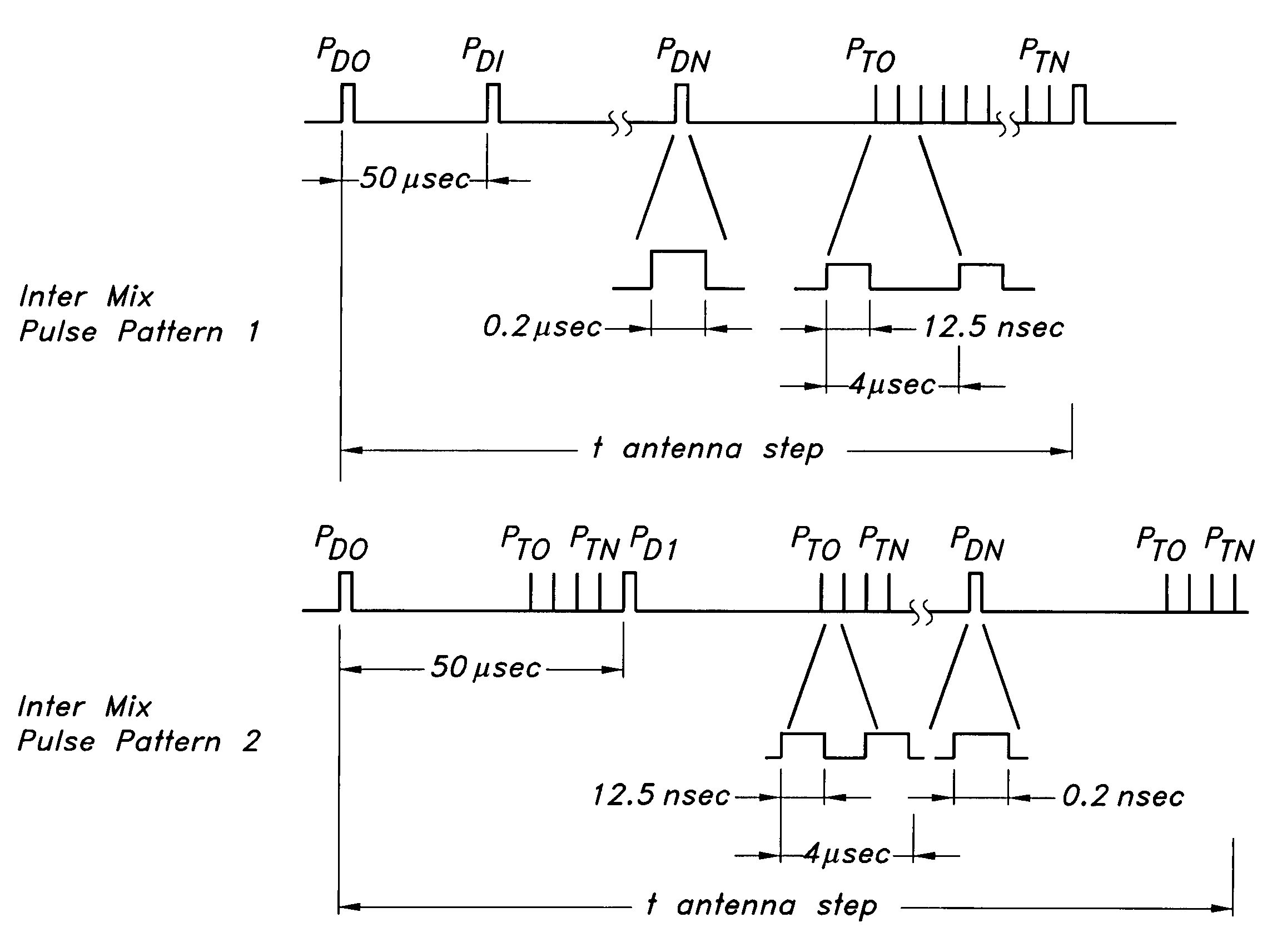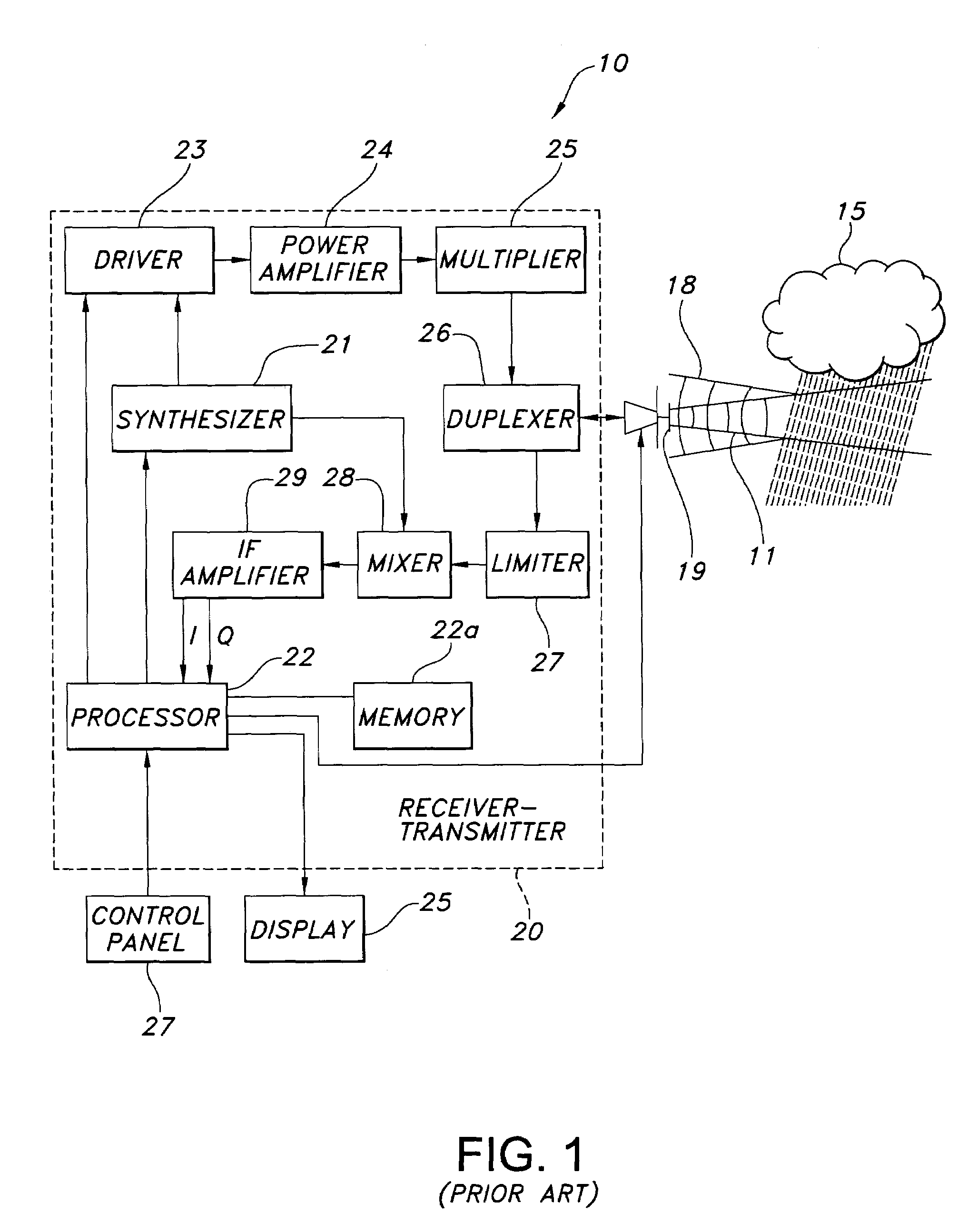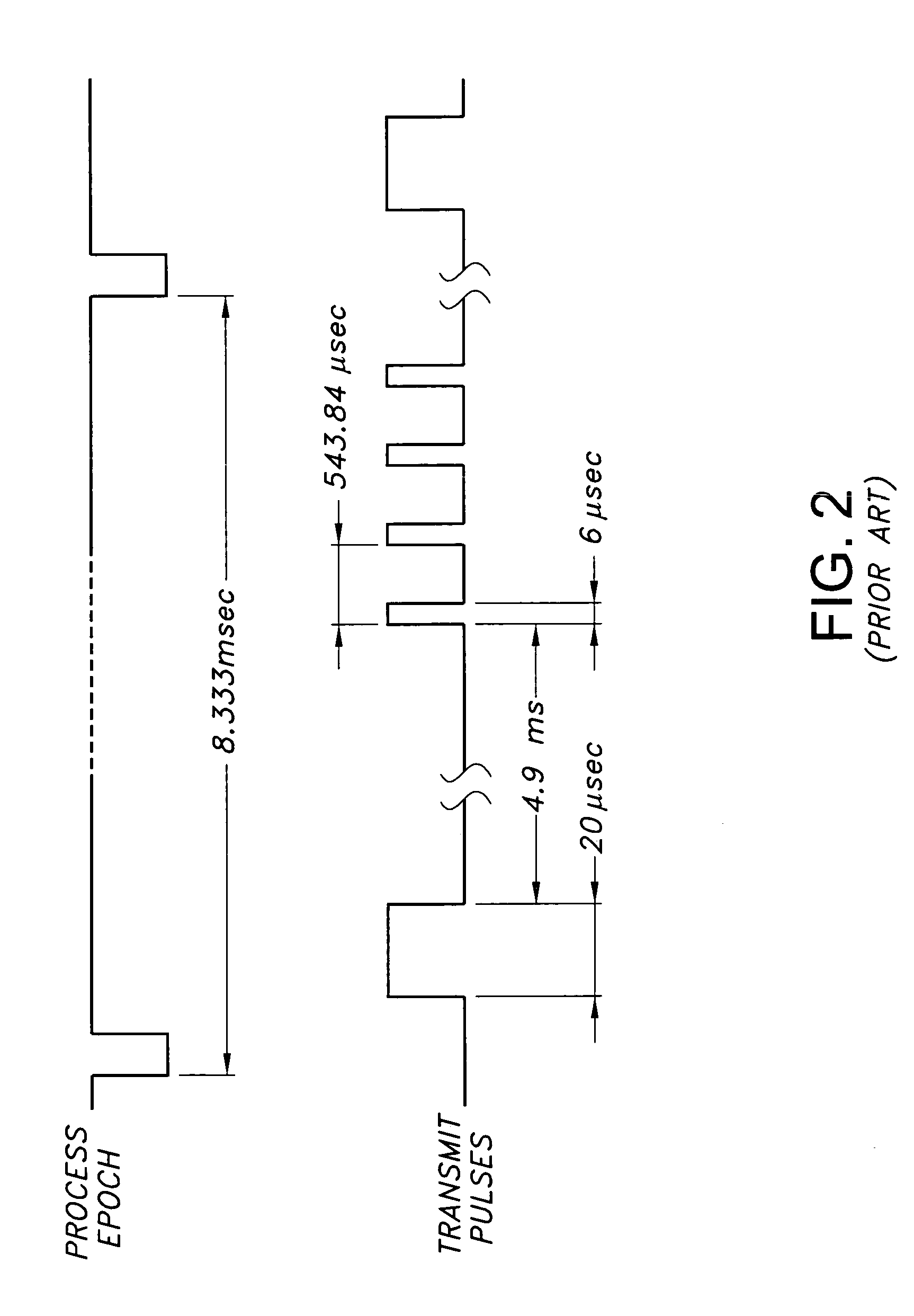Taxi obstacle detecting radar
a radar and obstacle detection technology, applied in the field of weather radar and aircraft runaway incursions, can solve the problems of not allowing the aircraft to operate autonomously, targets without transponders are not detectable, last largely unsolved problems, etc., and achieve the effect of avoiding the lowest target miss rate and avoiding the problem
- Summary
- Abstract
- Description
- Claims
- Application Information
AI Technical Summary
Benefits of technology
Problems solved by technology
Method used
Image
Examples
Embodiment Construction
[0035]The present invention is for a weather radar system used for obstacle detection during taxi operations. A weather radar that is already on-board aircraft such as commercial airliners may be modified or a new weather radar developed to detect ground obstacles. The weather radar of the present invention uses a short-range (short transmitter pulse) detector and a longer-range Doppler-aided closing target detector. Weather radar may be used for obstacle detection during taxi operations since the weather function is generally either not being used or if used the update rate for weather information may be very slow.
[0036]Weather radars are known in the art for detecting severe weather and for providing a flight crew in an aircraft a two dimensional map display showing range bearing and intensity of detected weather patterns. Flight hazards due to weather conditions are primarily the result of precipitation and turbulence. A block diagram of a representative weather radar 10 that may...
PUM
 Login to View More
Login to View More Abstract
Description
Claims
Application Information
 Login to View More
Login to View More - R&D
- Intellectual Property
- Life Sciences
- Materials
- Tech Scout
- Unparalleled Data Quality
- Higher Quality Content
- 60% Fewer Hallucinations
Browse by: Latest US Patents, China's latest patents, Technical Efficacy Thesaurus, Application Domain, Technology Topic, Popular Technical Reports.
© 2025 PatSnap. All rights reserved.Legal|Privacy policy|Modern Slavery Act Transparency Statement|Sitemap|About US| Contact US: help@patsnap.com



